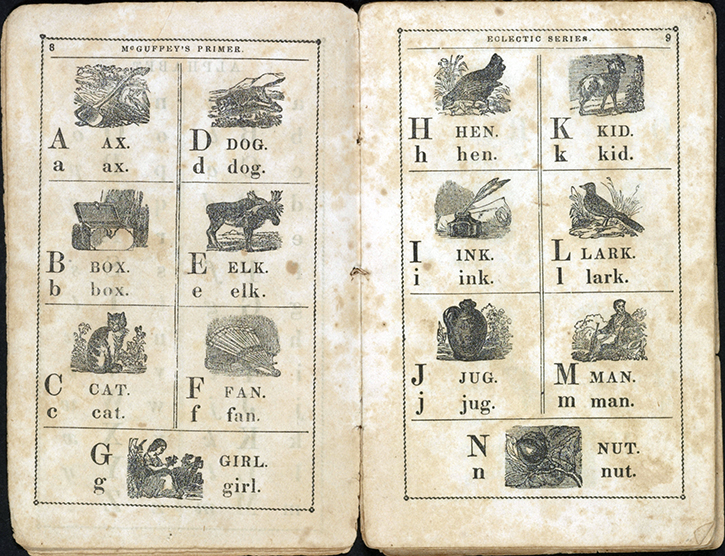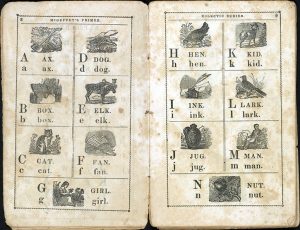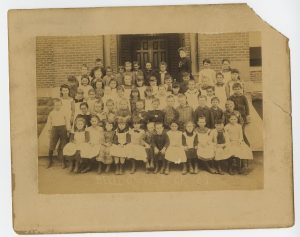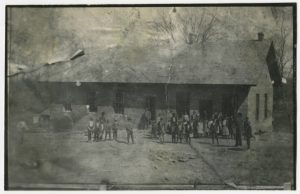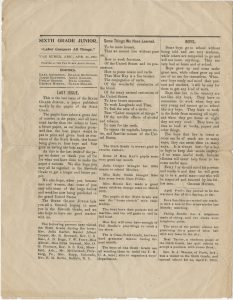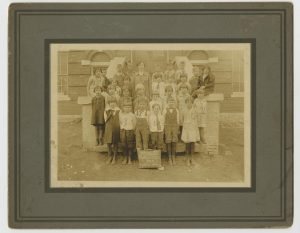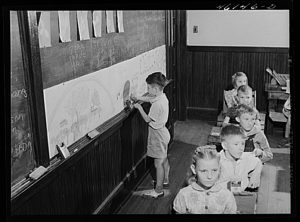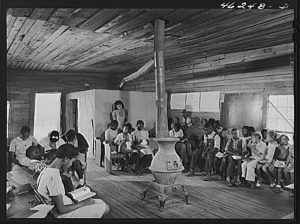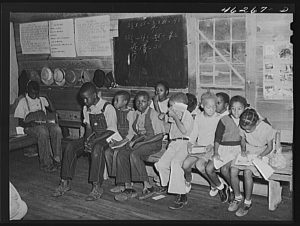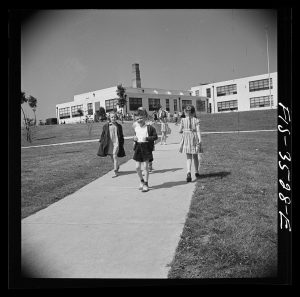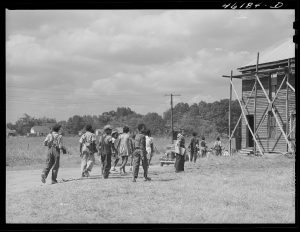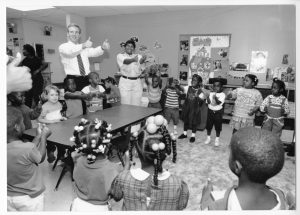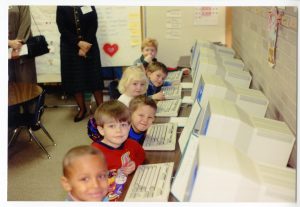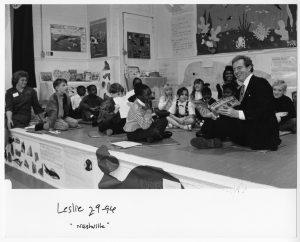How do present day schools compare with those in the past?
Subject(s): African Americans, Arkansas History, and US History
Time Period(s): (1929-1945) Great Depression and World War II
Grade level(s): 0-2, 3-5, and 6-8
Click here to download the powerpoint
This primary source set contains images of schools in Arkansas and the United States between the late 1800s and the last decade of the 20th century. Two additional primary sources, a school newsletter excerpt and an image of McGuffey’s Reader, a book used by most American schools to teach reading in the 19th century, help students see the differences and similarities between schools in the past and present.
Source Set
- McGuffey’s Newly Revised Eclectic Primer. With Pictorial Illustrations.
- Second grade class portrait from Belle Grove Elementary School in Fort Smith, 1889
- School for African American Children, Fayetteville, Arkansas
- “Some Things We Have Learned” Sixth Grade Junior “Labor Conquers All Things”, 1903
- First and second grade class portrait in Huntington, Arkansas, 1926
- Siloam, Greene County, Georgia. Classroom in the school
- Veazy, Greene County, Georgia. The one-teacher Negro school in Veazy, south of Greensboro
- White Plains, Greene County, Georgia. Studying insects in a classroom at the school
- Veazy, Greene County, Georgia. The one-teacher Negro school, south of Greensboro
- Greenbelt, Maryland. Federal housing project. Children going home from school, 1942.
- Greensboro, Greene County, Georgia. Negro children going home from school, 1941.
- Capital for the Day: West Memphis, 1993
- Capital for the Day: Nashville, 1994
- Capital for the Day: Nashville, 1994
Description
Pages 8-9 of McGuffey’s Primer, used to teach the alphabet to young children in the 19th century. This edition is from 1849.
Description
Teacher and first and second grade students posing for a class photograph on the steps outside their school in Huntington, Arkansas.
Description
Photograph of a large group of black children of different ages in a one-room schoolhouse with teacher.
Description
Betty Tucker visits children participating in the K-3 Writing to Read Computer Lab at Nashville Primary School.
Additional resource(s):
National Archives Photograph Analysis Sheet
Arkansas Historic Preservation Program “Life in a One-Room Schoolhouse”
Read Works – “School: How Has it Changed?”
State Historical Society of Iowa Primary Source Set “Schools Long Ago and Today”
Arkansas Frameworks(s):
Kindergarten:
H.12.K.1 Discuss changes over time using chronological terms (e.g., first, next, last, before, after, past, present, now, long ago)
H.12.K.3 Compare a child’s life of the present to that of the past using visual representations (e.g., growing food, rules and laws, making clothing, transportation, communication)
H.13.K.3 Describe ways people learn about the past (e.g., photos, artifacts, diaries, oral history, stories)
H.13.K.4 Compare the differences in sources written in the present or the past
H.13.K.6 Identify changes in the classroom/school in terms of cause and effect
First Grade:
H.12.1.1 Explain ways family and school have changed using chronological terms (e.g., yesterday/past, today/present, tomorrow/future)
H.12.1.3 Compare present day families, objects, and events with those in the past using visual representations, news stories, and artifacts (e.g. daily life tasks, food, clothing, transportation, communication, recreation)
H.13.1.3 Draw conclusions about family or school life in the past using historical records and artifacts (e.g., photos, diaries, oral history)
H.13.1.4 Identify aspects of a source that establish time, place and credibility
H.13.1.6 Identify changes in the classroom/school in terms of cause and effect
Second Grade:
H.12.2.1 Create historical narratives using chronological sequences of related events in the community or region (e.g., founding of the town, construction of an important building
H.13.2.4 Identify the purposes of primary and secondary sources
H.12.2.3 Compare life in your community past and present using maps, photographs, news stories, artifacts, or interviews (e.g. transportation, communication, recreation, jobs, housing)
H.13.2.4 Identify the purposes of primary and secondary sources
